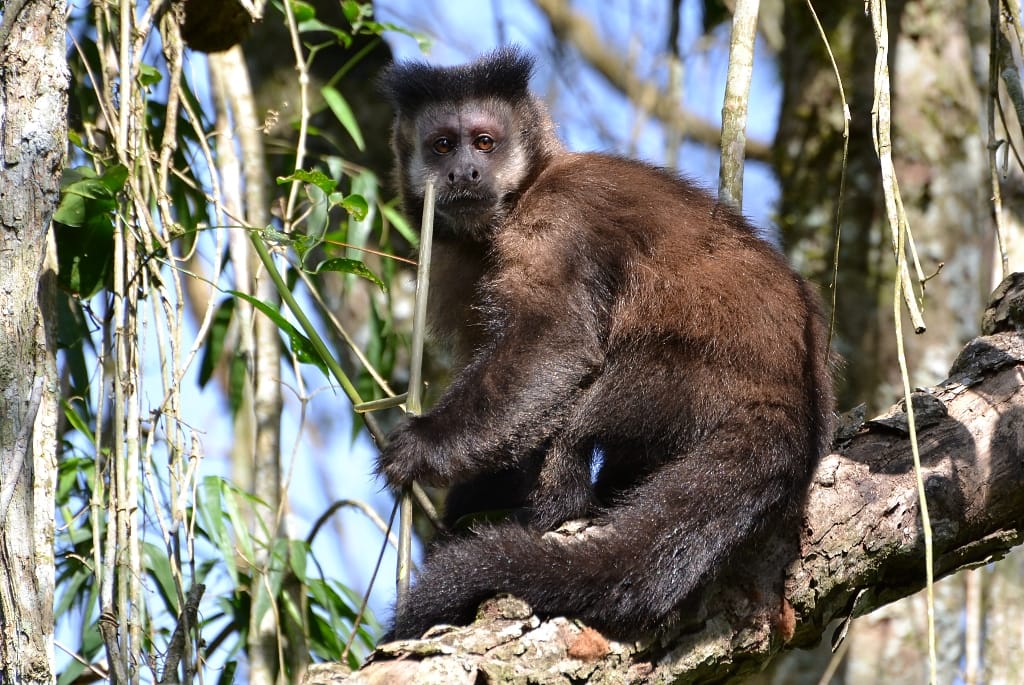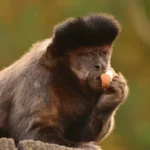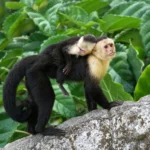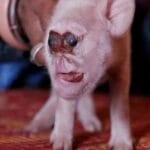Black capuchin monkeys, with their sleek black fur, contrasting white facial markings, and a prehensile tail that acts as an extra limb, are captivating primates inhabiting the diverse Atlantic Forests of Brazil and Argentina. These remarkable creatures, known for their intelligence and intricate social structures, offer a glimpse into the fascinating world of primate behavior. Let’s delve into the remarkable lives of black capuchin monkeys, exploring their social dynamics, problem-solving abilities, and the intricate communication systems that make them a truly captivating species.
Black Capuchin Monkey
These aren’t your average primates. Black capuchin monkeys, found in the Atlantic Forests of Brazil and Argentina, are renowned for their intelligence, complex social groups, and remarkable adaptability to their changing environments.
What Makes Them Stand Out
Imagine a monkey with sleek, dark fur contrasted by striking white markings on its face, moving effortlessly through the trees using its strong, flexible tail like an extra hand – that’s a black capuchin! Distinct from their “tufted” cousins, black capuchins have smooth caps of fur on their heads. Scientists have identified three distinct subspecies with subtle differences: S. n. nigritus, S. n. cucullatus, and S. n. robustus.
Living in a Capuchin Crew
Black capuchins are the social butterflies of the primate world, living in groups that can reach up to 30 members. Communication is key to their social success, employing a range of sounds, from chirps and whistles to barks and screams. Their remarkable tool-using abilities set them apart, with scientists observing them cracking nuts with stones, fishing for termites with sticks, and even selecting the perfect leaves to soak up drinking water.
A Forest Under Pressure
Life in the Atlantic Forest presents challenges for black capuchins. Deforestation is destroying their homes and fragmenting their populations, while the illegal pet trade poses another threat, ripping these intelligent creatures from their natural environments.
Giving a Helping Hand
Thankfully, efforts are underway to protect black capuchin monkeys. Conservation groups are establishing protected areas to safeguard the forest, planting trees to restore what’s been lost, and promoting responsible tourism. We can all contribute by learning more about these incredible animals and supporting initiatives that ensure black capuchins have a future, safeguarding a healthier planet for all.
Where Do Black Capuchin Monkeys Live?
Black capuchin monkeys thrive in the lush, vibrant rainforests of South America, from the vast Amazon rainforest to the Orinoco River in Venezuela. Countries like Brazil, Colombia, Peru, and even French Guiana are all part of their range.
These adaptable primates are found in various rainforest habitats, from warm and humid lowland forests to cooler mountainous regions reaching elevations of 2,700 meters. Primarily arboreal, they spend most of their time in the trees, exhibiting remarkable agility as they navigate the canopy. They do venture to the ground for foraging and travel.
Black capuchin monkeys possess several adaptations that allow them to flourish in their rainforest homes. Their robust build and strong limbs facilitate movement through the trees, while their coarse fur provides protection from the elements. Their most distinguishing feature, their long, prehensile tail, acts as an extra limb, providing balance, grip, and agility. The distinctive tuft of hair on their forehead, resembling a “wig,” is thought to play a role in communication, potentially signaling emotions or intentions to other monkeys.
Want to know the lifespan of the Capuchin monkey? Click here to find out.
Black Capuchin Monkey Physical Characteristics and Adaptations: Built for the Trees and Brimming with Brains
Often compared to tiny monks due to their dark fur and “hooded” heads, black capuchin monkeys are far more than just cute faces. Their physical adaptations and remarkable intelligence make them one of the most intriguing primates on Earth.
Built for the Trees
Black capuchins are easily recognizable with their sleek black fur, a contrasting white patch on their chest and head, and a long, prehensile tail. This tail acts as an extra arm, essential for navigating the complex rainforest canopy with grace and agility.
Brains and Brawn
Beyond their physical adaptations, capuchins possess impressive intelligence. They are known for their tool use, problem-solving abilities, and even exhibit cultural variations between groups, demonstrating a capacity for learning and adapting traditions.
Living the Social Life
Social interaction is at the heart of capuchin life. They live in tightly knit groups, forming complex societies with hierarchies and social rules. Despite this structure, they are highly cooperative, forming strong bonds and alliances within their groups.
We can find different types of Capuchin monkeys, one of those is the weeper capuchin monkey. Read more about the weeper capuchin monkey here.
Unveiling the Social World of Black Capuchin Monkeys: Group Dynamics, Communication, and Intelligence
Black capuchin monkeys, much like humans, possess their own unique cultures and traditions, passing down knowledge and customs through generations. This makes their social lives incredibly complex and captivating to study.
Living the Group Life: A Balancing Act
Capuchin groups are dynamic and complex, with each individual playing a specific role. Some groups exhibit strict hierarchies, where dominant individuals lead the group in foraging and decision-making, while others have a more egalitarian structure, emphasizing cooperation and sharing. Regardless of their social organization, capuchins thrive on social interaction, forming intricate relationships akin to a large, extended family.
Chatterboxes of the Jungle: A Symphony of Sounds and Gestures
The lively chatter of monkeys in a forest is more than just noise; for capuchins, it’s a complex language. They communicate using various calls, each with specific meanings, such as warning others about predators or announcing the discovery of a delicious fruit tree.
Their communication extends beyond vocalizations, incorporating facial expressions, from playful grins to warning grimaces. Body language adds another layer of complexity, with a puffed-up chest conveying dominance and a gentle touch offering reassurance.
Brainpower on Display: The Resourceful World of Capuchin Tool Use
Black capuchin monkeys are not only social but incredibly resourceful, demonstrating remarkable tool-using abilities to access difficult-to-reach food. They’ve been observed using stones to crack open nuts and sticks to extract insects from tree crevices. These skills are learned through observation and imitation, highlighting their intelligence and ability to adapt to their environment.
Beyond Behavior: Glimpsing the Capuchin Mind
By studying their social traditions and learning abilities, scientists gain insights into the impressive cognitive abilities of black capuchin monkeys. These primates demonstrate innovation, remember complex sequences, plan ahead, and even display empathy and social reasoning, blurring the lines between human and animal intelligence.
A World of Wonder Awaits
The more we study black capuchin monkeys, the more we uncover their similarities to humans. They have families, friends, and rivals; they communicate, cooperate, and sometimes, deceive. They learn, innovate, and pass on knowledge through generations, reminding us of the remarkable diversity and intelligence within the animal kingdom
















